join me on my journey to cement my status as a pretentious English BA
Don't wanna be here? Send us removal request.
Text
you still have time to do the things you want to do. even if you feel like you’ve lost too much time to an illness or a lifestyle, you still have time. i hope you find the courage to make your life the way you want it. it’s not too late.
1K notes
·
View notes
Text
“Some people think that to be strong is to never feel pain. In reality the strongest people are the ones who feel it, understand it, accept and learn from it.”
— Unknown
1K notes
·
View notes
Text
Chrome extensions I actually use as a mentally ill university student
Making websites easier to digest:
Dark Reader - Changes any webpage to dark mode.
Mercury Reader - Simplifies the layout of any webpage to eliminate distractions and irritating formatting.
Podcastle AI - Turns any article into a podcast. This is a lifesaver for being able to process what I’m reading, to be honest.
Spelling/grammar:
LanguageTool - Spelling and grammar check for those of us who regularly type in more than one language.
Grammarly - Spelling and grammar check for those of us who only type in English. Can be used with LanguageTool installed, which is what I do.
Google Dictionary - Define any word on the webpage with a double-click.
Google Translate - Translate an entire webpage or even just a short segment.
Misc:
AdGuard Adblocker - After trying quite a few adblocker options, this is the one I find the best.
The Great Suspender - Automatically suspend inactive tabs to help with performance.
Honey - Try coupon codes automatically to save money on online purchases.
Built-in Chrome tab grouping - Group your tabs to keep organized and minimize distracting clutter.
26K notes
·
View notes
Photo
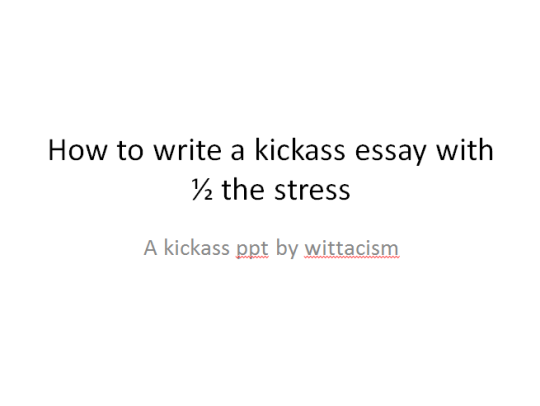

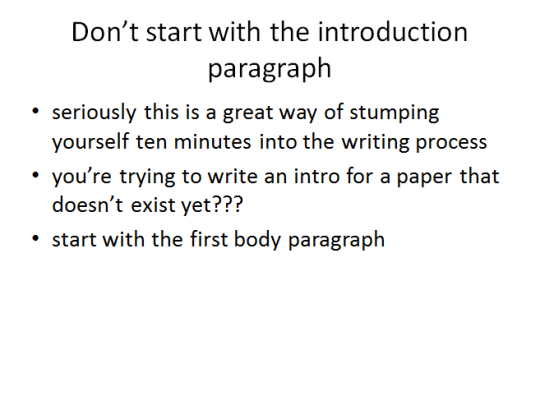

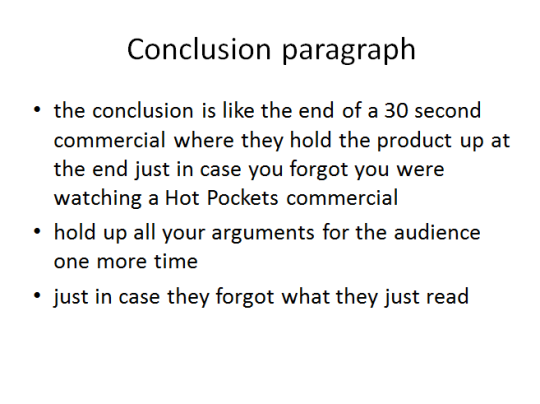
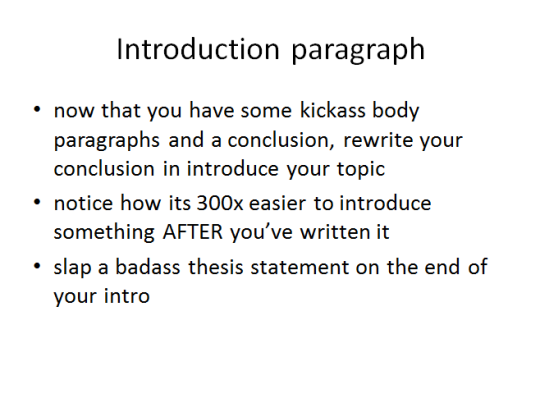
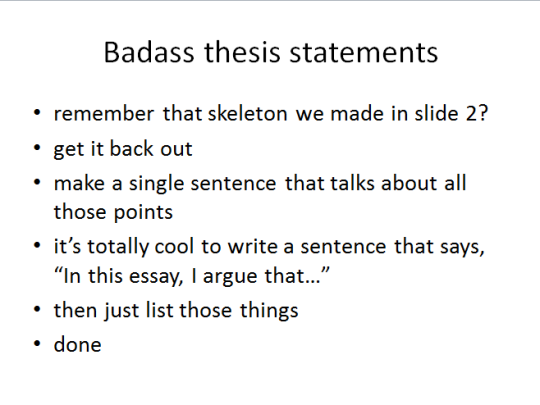
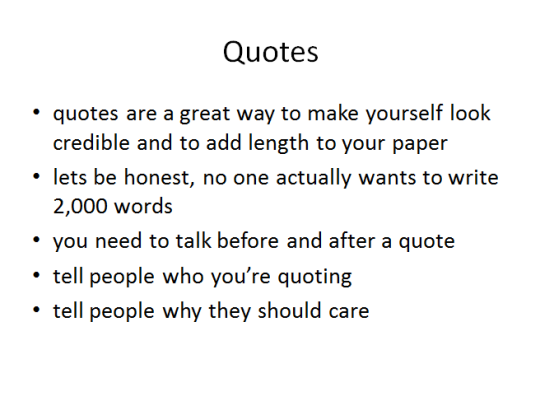
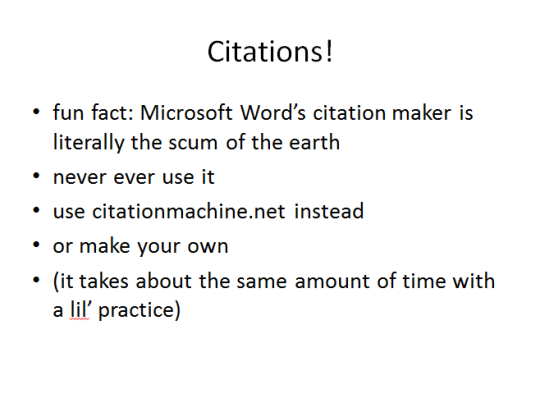

It’s essay writing season for tons of students!
After being a college writing tutor for over a year, I thought I would share my advice with all you awesome people on tumblr. This is how I write essays, but if you’ve got more tips, feel free to add them below.
Happy writing. You can do it!
1M notes
·
View notes
Text
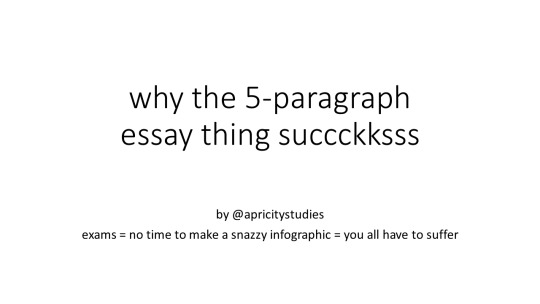
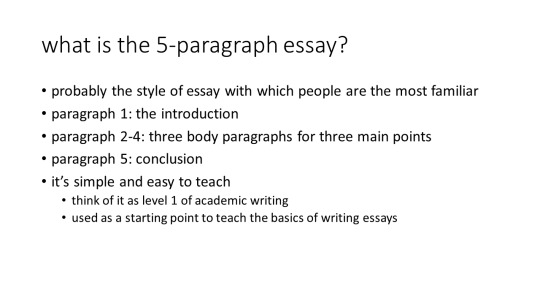
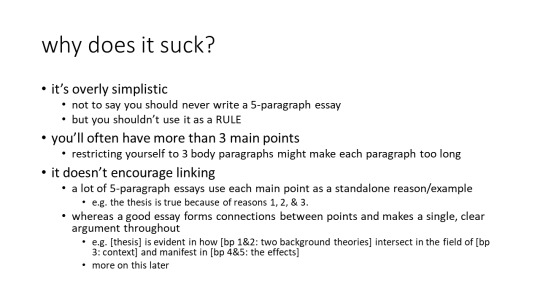
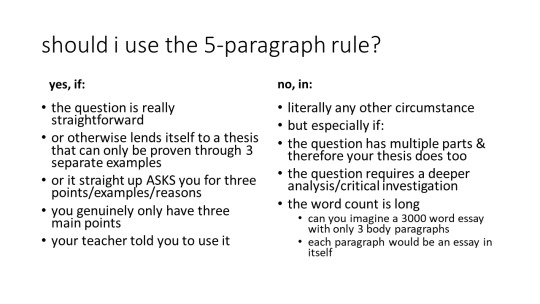
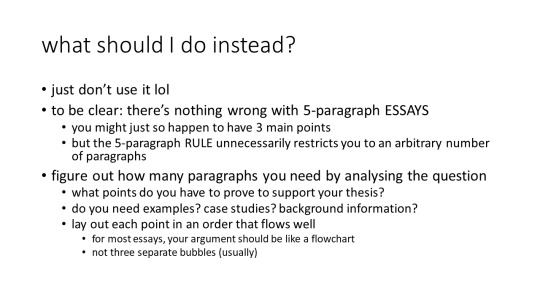
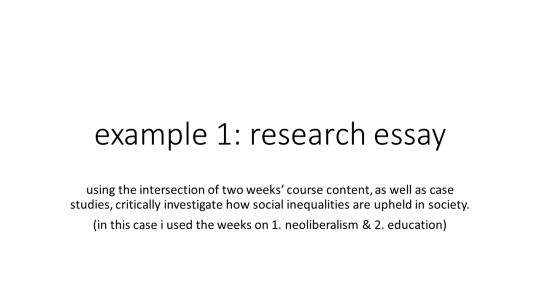

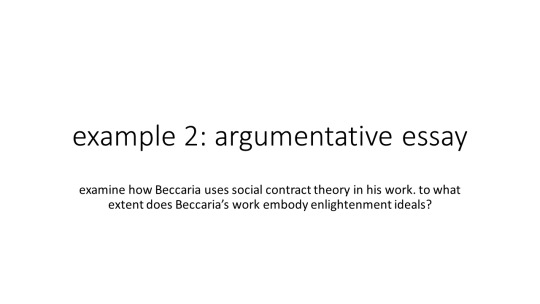
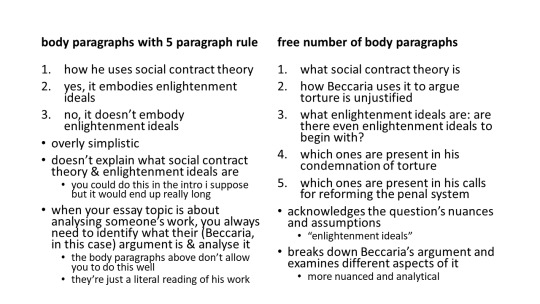
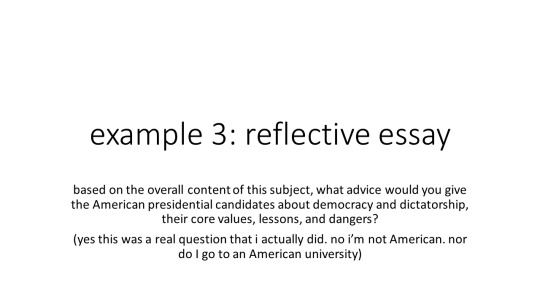
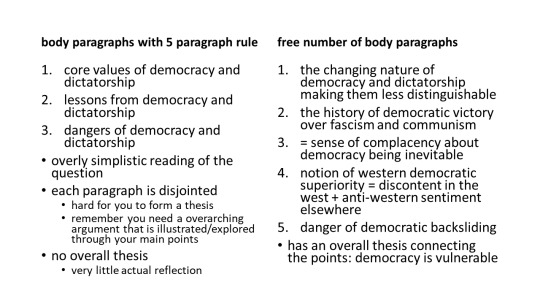

why i hate (well, hate is a strong word) the 5-paragraph rule and what i use instead! these examples are tailored to the humanities and social sciences, so keep in mind this might be different for other fields of study.
i also have an essay preparation guide here :)
2K notes
·
View notes
Text
On essay writing: short guides
overcoming procrastination
principles of writing, style and finding your voice
essay-writing in five steps
researching and building a collection of references
note-taking and formatting research notes
2K notes
·
View notes
Text
Ways to un-stick a stuck story
Do an outline, whatever way works best. Get yourself out of the word soup and know where the story is headed.
Conflicts and obstacles. Hurt the protagonist, put things in their way, this keeps the story interesting. An easy journey makes the story boring and boring is hard to write.
Change the POV. Sometimes all it takes to untangle a knotted story is to look at it through different eyes, be it through the sidekick, the antagonist, a minor character, whatever.
Know the characters. You can’t write a story if the characters are strangers to you. Know their likes, dislikes, fears, and most importantly, their motivation. This makes the path clearer.
Fill in holes. Writing doesn’t have to be linear; you can always go back and fill in plotholes, and add content and context.
Have flashbacks, hallucinations, dream sequences or foreshadowing events. These stir the story up, deviations from the expected course add a feeling of urgency and uncertainty to the narrative.
Introduce a new mystery. If there’s something that just doesn’t add up, a big question mark, the story becomes more compelling. Beware: this can also cause you to sink further into the mire.
Take something from your protagonist. A weapon, asset, ally or loved one. Force him to operate without it, it can reinvigorate a stale story.
Twists and betrayal. Maybe someone isn’t who they say they are or the protagonist is betrayed by someone he thought he could trust. This can shake the story up and get it rolling again.
Secrets. If someone has a deep, dark secret that they’re forced to lie about, it’s a good way to stir up some fresh conflict. New lies to cover up the old ones, the secret being revealed, and all the resulting chaos.
Kill someone. Make a character death that is productive to the plot, but not “just because”. If done well, it affects all the characters, stirs up the story and gets it moving.
Ill-advised character actions. Tension is created when a character we love does something we hate. Identify the thing the readers don’t want to happen, then engineer it so it happens worse than they imagined.
Create cliff-hangers. Keep the readers’ attention by putting the characters into new problems and make them wait for you to write your way out of it. This challenge can really bring out your creativity.
Raise the stakes. Make the consequences of failure worse, make the journey harder. Suddenly the protagonist’s goal is more than he expected, or he has to make an important choice.
Make the hero active. You can’t always wait for external influences on the characters, sometimes you have to make the hero take actions himself. Not necessarily to be successful, but active and complicit in the narrative.
Different threat levels. Make the conflicts on a physical level (“I’m about to be killed by a demon”), an emotional level (“But that demon was my true love”) and a philosophical level (“If I’m forced to kill my true love before they kill me, how can love ever succeed in the face of evil?”).
Figure out an ending. If you know where the story is going to end, it helps get the ball rolling towards that end, even if it’s not the same ending that you actually end up writing.
What if? What if the hero kills the antagonist now, gets captured, or goes insane? When you write down different questions like these, the answer to how to continue the story will present itself.
Start fresh or skip ahead. Delete the last five thousand words and try again. It’s terrifying at first, but frees you up for a fresh start to find a proper path. Or you can skip the part that’s putting you on edge – forget about that fidgety crap, you can do it later – and write the next scene. Whatever was in-between will come with time.
135K notes
·
View notes
Text
I had an idea for a Play
It’s Hamlet
No Stage, just a bunch of chairs and props scattered around the room, audience sits wherever they want
A Disclaimer is given at the beginning of the play: “There Will Be Blood, and Audicence paticipation.” “You will be expected to stand up and yell “STOP!”.” “You’ll know when.”
Play continues as normal, but maybe with a little more Verve than usual
Just let the actors be Real Unhinged
Make it clear somewhere in the second act, that the actors aren’t pulling thier punches-
Those are REAL broken noses, that’s REAL blood on the floor and those swords sure as hell aren’t blunted
HOPEFULLY someone in the audience stands up and yells “STOP” before rosencrantz and Guildenstern are killed on stage
From that point on, the play is Improv
Whoever stands up is treated by the actors like another character in the play- Hamlet will try to convince them to aid his cause, Polonius to get them to Kill Hamlet, Ophelia to get her the hell out of there etc.
The Doors Are Locked
Efforts to make them break character will be ignored, they can only be reasoned with “In Character"
It is now up to the Audience to try and stop The Tragedy.
This is a terrible thearer production, a great horror movie or a fantastic prank on theater critics.
25K notes
·
View notes
Text
my masterlist of 'how to life’ tips
Cleaning & Tidying
Make your bed in the morning. It takes seconds, and it’s worth it.
Reset to zero each morning.
Use the UFYH 20/10 system for clearing your shit.
Get a reed diffuser and stick it on your windowsill.
Have a ‘drop-zone’ box where you dump anything and everything. At the beginning/end of the day, clear it out and put that shit away.
Roll your clothes, don’t fold them - or fold them vertically.
Automate your chores. Have a cleaning schedule and assign 15mins daily to do whatever cleaning tasks are set for that day. Set a timer and do it - once the timer is up, finish the task you’re on and leave it for the day.
Fold your clothes straight out of the tumble dryer (if you use one), whilst they’re still warm. This minimises creases and eliminates the need for ironing.
Clean your footwear regularly and you’ll feel like a champ.
Organisation & Productivity
Learn from Eisenhower’s Importance/Urgency matrix.
Try out the two-minute rule and the Pomodoro technique.
Use. A. Planner. (Or Google Calendar, if that’s more your thing.)
Try bullet journalling.
Keep a notebook/journal/commonplace book to dump your brain contents in on the regular.
Set morning alarms at two-minute intervals rather than five, and stick your alarm on the other side of the room. It’s brutal, but it works.
Set three main goals each day, with one of them being your #1 priority. Don’t overload your to-do list or you’ll hit overload paralysis and procrastinate.
If you’re in a slump, however, don’t be afraid to put things like “shower” on your to do list - that may be a big enough goal in itself, and that’s okay.
Have a physical inbox - a tray, a folder, whatever. If you get a piece of paper, stick it in there and sort through it at the end of the week.
Consider utilising the GTD System, or a variation of it.
Try timeboxing.
Have a morning routine, and guard that quiet time ferociously.
Save interesting-looking shit to instapaper. Have a set time where you read through the stuff you saved to instapaper and save the shit that you like from instapaper to evernote (or bookmark it properly).
During your working hours, put on your footwear, even if you’re sat on your bed. (Why?)
Have a folder for all your important documents and letters, organised by topic (e.g. medical, bank, university, work, identification). At the front of this folder, have a sheet of paper with all the key information written on it, such as your GP’s details, your passport details, driving licence details, bank account number, insurance number(s), and so on.
Try using StayFocusd and RescueTime (or similar apps/extensions). (I promise, you’ll find that you’re not as busy as you think you are.)
Schedule working time and down time alike, in the balance that works for you.
Money
Have. A. God. Damn. Budget.
Use a money tracker like toshl, mint, or splitwise. Enter all expenses asap! (You will forget, otherwise.)
Have a ‘money date’ each week, where you sort through your finances from the past seven days and then add it to a spreadsheet. This will help you identify your spending patterns and whether your budget is actually working or not.
Pack your own frickin’ lunch like a grown-up and stop buying so many takeaway coffees. Keep snacks in your bag.
Go to your bank and take out £100 in £1 coins (or w/e your currency is). That shit will come in useful for all kinds of things and you’ll never be short on change for the bus or the laundry.
Food & Cooking
Know how to cook the basics: a starch, a protein, a vegetable, and a sauce.
Simple, one-pot meals (“a grain, a green, and a bean”) are a godsend.
Dried porcini mushrooms make a fantastic stock to cook with.
Batch cook and freeze. Make your own ‘microwave meals’.
Buy dried goods to save money - rice and beans are a pittance. (Remember to soak dried beans first, though!)
Consider Meatless Mondays; it’s healthier, cheaper, and more environmentally friendly.
Learn which fruits and vegetables are cheapest at your store, and build a standard weekly menu around those. (Also remember that frozen vegetables are cheap and healthy.)
Learn seasoning combinations. Different seasoning, even with the exact same ingredients, can make a dish seem completely new.
Don’t buy shit for a one-off recipe, especially if you won’t use it all. If you really want to try out a recipe, see if a friend would be interested in making it with you, then pool for the expenses.
Make your own goddamned pasta sauce. Jamie Oliver has a decent recipe here, but the beauty of tomato sauce is that you can totally wing it and adapt the fuck out of it.
Misc
Have a stock email-writing format.
Want to start running, but find it boring? Try Zombies, Run!.
Keep a goddamn first aid kit and learn how to use it.
Know your OTC pain relief.
Update your CV regularly.
Keep a selection of stamps and standard envelopes for unexpected posting needs. (It happens more regularly than you would think!)
Some final words of advice:
Organisation is not a goal in itself, it is a tool. Don’t get caught up in the illusion of productivity and get distracted from the actual task at hand.
Routines and habits will help you. Trust in them.
You have the potential to be an organised and productive person, just as much as anybody else. It just takes practice.
45K notes
·
View notes
Text
WRITING ESSAYS AT DEGREE LEVEL: PART TWO
As a new term is starting, I’ve laid out some new and hopefully helpful tips on how to approach essay writing. Learning to write well is a long process and can feel frustrating and futile, but it’s often just a case of sticking with it.
RESEARCHING:
Read through a variety of sources. Start by looking through the library to find any broad sources which will help you get a handle on the subject, then begin reading some more specialised books and essays. Search JSTOR and Project Muse, utilise your university library and any others that might be available to you - films and interviews can also be handy!
Find out how you like to research. Some people I know like to get all of their secondary reading done before they start. However, I prefer to read as I write so it stays fresh in my mind. Either way is just as effective, but it’s important to find out what works best for you.
When you go and speak to your tutor about your essay, arrive having done some research. Don’t walk into their room with nothing and expect them to think of an idea for you. If you’re feeling really stuck, choose a couple of potential books you want to write about and read a few secondary sources. Start by writing a couple of ideas down and bring this to your meeting with your professor. They’ll be much more able to help if they have something to work with, and you can spend your time bouncing your ideas of each other until you hopefully arrive at something more concrete.
Don’t just stick to a topic or question just because it’s easy and you’ve written about it before. Push yourself and learn something new. Go for what you’re interested in. If you continually stay in your comfort zone you’ll be less likely to fully engage in what you’re writing about.
WRITING:
Trust the process. When you starting writing it can be easy to fall into a cycle of procrastination out of fear that you won’t get anything valuable on the page. If I’m feeling really stuck I like to just sit down with a 20 minute timer and write as much as I can in that time. It doesn’t have to be good, but having something you can then edit and redraft makes the process feel a lot less daunting.
Start with your theory (if you’re using it). As a general rule, your essay structure should be roughly as follows: Introduction, introduction to theory and how you’re going to use it, body of the essay, conclusion. Always follow your introduction with how you intend to use your theory and what it is. This will clear up any confusion and make your essay easier to follow.
If you’re finding it difficult to structure a large essay, it can be helpful to split it into two lines of enquiry. You can then clearly lay this out in your introduction, something like this: “For this purpose of this essay my argument will be two-fold, beginning with an exploration of…before later demonstrating how this…together, this bipartite examination will seek to identify how…’ The two lines of enquiry are still linked, and the second half of your essay will build on your first, but it will help you to keep to a clear structure and make things easier for your reader, and for your own thought process.
EDITING AND REDRAFTING:
Print the document out and read it aloud. As you’re doing this, briefly highlight anything you’re not happy with, before going through each highlighted point and editing it. By reading it quickly the essay will stay fresh in your mind allowing you to recognise anything that doesn’t work structurally, whilst also revealing any awkward sentences.
If you’ve highlighted and redrafted your essay and the structure still isn’t working, cut out each paragraph and lay them on the floor in order. From here you can keep rearranging you essay until you have something you’re happy with. If it’s your sentence structure that’s the problem, cut the problematic paragraphs into sentences and follow the same process. Having it in tangible pieces in front of you can help to give you a new perspective and it is in easy way of shifting things around.
Leave your essay for a few days (if you can) and finish with a final proofread: slowly comb through your essay for any small errors, to ensure that you haven’t missed anything whilst correcting the big mistakes.
RECEIVING FEEDBACK
Keep a written record of each piece of feedback you receive, good or bad. There should be a list for praise and a second list for the constructive criticism, which you can revisit when it comes to writing your next essay. Having a list of areas you need to work on will remind you which parts of your essay you should take more time on, and having your positive feedback easily accessible will stand as a reminder that you can produce good work!
If there is something you don’t understand, speak to your tutor about it. It’s always helpful to bring a piece of your writing along to one of these sessions and asking if they can read through and tell you where you’re going wrong.
In university you normally won’t be given any long and detailed information about how to correctly write a good essay, which is why it’s so important to take note of your feedback. If you’ve taken it all on board, by the end of your degree you should have built up hundreds of tips on how to approach approach essay writing which will help you to produce good quality writing. Listen to any advice your professors give and spend time making sure you have the basics down, before trying anything too fancy.
800 notes
·
View notes
Text
“In the Iliad, the truth of life—however harsh or ironic—prevails over the occasions of feeling. […] “She remembered to eat when she was worn out with weeping.” No other poet, not even Shakespeare, would have run the risk of so humble a truth at such an instant of tragic solemnity.”
— George Steiner, “Homer and the Scholars” from Language and Silence
4K notes
·
View notes
Photo

FAMOUS AUTHORS
Classic Bookshelf: This site has put classic novels online, from Charles Dickens to Charlotte Bronte.
The Online Books Page: The University of Pennsylvania hosts this book search and database.
Project Gutenberg: This famous site has over 27,000 free books online.
Page by Page Books: Find books by Sir Arthur Conan Doyle and H.G. Wells, as well as speeches from George W. Bush on this site.
Classic Book Library: Genres here include historical fiction, history, science fiction, mystery, romance and children’s literature, but they’re all classics.
Classic Reader: Here you can read Shakespeare, young adult fiction and more.
Read Print: From George Orwell to Alexandre Dumas to George Eliot to Charles Darwin, this online library is stocked with the best classics.
Planet eBook: Download free classic literature titles here, from Dostoevsky to D.H. Lawrence to Joseph Conrad.
The Spectator Project: Montclair State University’s project features full-text, online versions of The Spectator and The Tatler.
Bibliomania: This site has more than 2,000 classic texts, plus study guides and reference books.
Online Library of Literature: Find full and unabridged texts of classic literature, including the Bronte sisters, Mark Twain and more.
Bartleby: Bartleby has much more than just the classics, but its collection of anthologies and other important novels made it famous.
Fiction.us: Fiction.us has a huge selection of novels, including works by Lewis Carroll, Willa Cather, Sherwood Anderson, Flaubert, George Eliot, F. Scott Fitzgerald and others.
Free Classic Literature: Find British authors like Shakespeare and Sir Arthur Conan Doyle, plus other authors like Jules Verne, Mark Twain, and more.
TEXTBOOKS
Textbook Revolution: Find biology, business, engineering, mathematics and world history textbooks here.
Wikibooks: From cookbooks to the computing department, find instructional and educational materials here.
KnowThis Free Online Textbooks: Get directed to stats textbooks and more.
Online Medical Textbooks: Find books about plastic surgery, anatomy and more here.
Online Science and Math Textbooks: Access biochemistry, chemistry, aeronautics, medical manuals and other textbooks here.
MIT Open Courseware Supplemental Resources: Find free videos, textbooks and more on the subjects of mechanical engineering, mathematics, chemistry and more.
Flat World Knowledge: This innovative site has created an open college textbooks platform that will launch in January 2009.
Free Business Textbooks: Find free books to go along with accounting, economics and other business classes.
Light and Matter: Here you can access open source physics textbooks.
eMedicine: This project from WebMD is continuously updated and has articles and references on surgery, pediatrics and more.
MATH AND SCIENCE
FullBooks.com: This site has “thousands of full-text free books,” including a large amount of scientific essays and books.
Free online textbooks, lecture notes, tutorials and videos on mathematics: NYU links to several free resources for math students.
Online Mathematics Texts: Here you can find online textbooks likeElementary Linear Algebra and Complex Variables.
Science and Engineering Books for free download: These books range in topics from nanotechnology to compressible flow.
FreeScience.info: Find over 1800 math, engineering and science books here.
Free Tech Books: Computer programmers and computer science enthusiasts can find helpful books here.
CHILDREN’S BOOKS
byGosh: Find free illustrated children’s books and stories here.
Munseys: Munseys has nearly 2,000 children’s titles, plus books about religion, biographies and more.
International Children’s Digital Library: Find award-winning books and search by categories like age group, make believe books, true books or picture books.
Lookybook: Access children’s picture books here.
PHILOSOPHY AND RELIGION
Bored.com: Bored.com has music ebooks, cooking ebooks, and over 150 philosophy titles and over 1,000 religion titles.
Ideology.us: Here you’ll find works by Rene Descartes, Sigmund Freud, Karl Marx, David Hume and others.
Free Books on Yoga, Religion and Philosophy: Recent uploads to this site include Practical Lessons in Yoga and Philosophy of Dreams.
The Sociology of Religion: Read this book by Max Weber, here.
Religion eBooks: Read books about the Bible, Christian books, and more.
PLAYS
ReadBookOnline.net: Here you can read plays by Chekhov, Thomas Hardy, Ben Jonson, Shakespeare, Edgar Allan Poe and others.
Plays: Read Pygmalion, Uncle Vanya or The Playboy of the Western World here.
The Complete Works of William Shakespeare: MIT has made available all of Shakespeare’s comedies, tragedies, and histories.
Plays Online: This site catalogs “all the plays [they] know about that are available in full text versions online for free.”
ProPlay: This site has children’s plays, comedies, dramas and musicals.
MODERN FICTION, FANTASY AND ROMANCE
Public Bookshelf: Find romance novels, mysteries and more.
The Internet Book Database of Fiction: This forum features fantasy and graphic novels, anime, J.K. Rowling and more.
Free Online Novels: Here you can find Christian novels, fantasy and graphic novels, adventure books, horror books and more.
Foxglove: This British site has free novels, satire and short stories.
Baen Free Library: Find books by Scott Gier, Keith Laumer and others.
The Road to Romance: This website has books by Patricia Cornwell and other romance novelists.
Get Free Ebooks: This site’s largest collection includes fiction books.
John T. Cullen: Read short stories from John T. Cullen here.
SF and Fantasy Books Online: Books here include Arabian Nights,Aesop’s Fables and more.
Free Novels Online and Free Online Cyber-Books: This list contains mostly fantasy books.
FOREIGN LANGUAGE
Project Laurens Jz Coster: Find Dutch literature here.
ATHENA Textes Francais: Search by author’s name, French books, or books written by other authors but translated into French.
Liber Liber: Download Italian books here. Browse by author, title, or subject.
Biblioteca romaneasca: Find Romanian books on this site.
Bibliolteca Virtual Miguel de Cervantes: Look up authors to find a catalog of their available works on this Spanish site.
KEIMENA: This page is entirely in Greek, but if you’re looking for modern Greek literature, this is the place to access books online.
Proyecto Cervantes: Texas A&M’s Proyecto Cervantes has cataloged Cervantes’ work online.
Corpus Scriptorum Latinorum: Access many Latin texts here.
Project Runeberg: Find Scandinavian literature online here.
Italian Women Writers: This site provides information about Italian women authors and features full-text titles too.
Biblioteca Valenciana: Register to use this database of Catalan and Valencian books.
Ketab Farsi: Access literature and publications in Farsi from this site.
Afghanistan Digital Library: Powered by NYU, the Afghanistan Digital Library has works published between 1870 and 1930.
CELT: CELT stands for “the Corpus of Electronic Texts” features important historical literature and documents.
Projekt Gutenberg-DE: This easy-to-use database of German language texts lets you search by genres and author.
HISTORY AND CULTURE
LibriVox: LibriVox has a good selection of historical fiction.
The Perseus Project: Tufts’ Perseus Digital Library features titles from Ancient Rome and Greece, published in English and original languages.
Access Genealogy: Find literature about Native American history, the Scotch-Irish immigration in the 19th and 20th centuries, and more.
Free History Books: This collection features U.S. history books, including works by Paul Jennings, Sarah Morgan Dawson, Josiah Quincy and others.
Most Popular History Books: Free titles include Seven Days and Seven Nights by Alexander Szegedy and Autobiography of a Female Slave by Martha G. Browne.
RARE BOOKS
Questia: Questia has 5,000 books available for free, including rare books and classics.
ARTS AND ENTERTAINMENT
Books-On-Line: This large collection includes movie scripts, newer works, cookbooks and more.
Chest of Books: This site has a wide range of free books, including gardening and cooking books, home improvement books, craft and hobby books, art books and more.
Free e-Books: Find titles related to beauty and fashion, games, health, drama and more.
2020ok: Categories here include art, graphic design, performing arts, ethnic and national, careers, business and a lot more.
Free Art Books: Find artist books and art books in PDF format here.
Free Web design books: OnlineComputerBooks.com directs you to free web design books.
Free Music Books: Find sheet music, lyrics and books about music here.
Free Fashion Books: Costume and fashion books are linked to the Google Books page.
MYSTERY
MysteryNet: Read free short mystery stories on this site.
TopMystery.com: Read books by Edgar Allan Poe, Sir Arthur Conan Doyle, GK Chesterton and other mystery writers here.
Mystery Books: Read books by Sue Grafton and others.
POETRY
The Literature Network: This site features forums, a copy of The King James Bible, and over 3,000 short stories and poems.
Poetry: This list includes “The Raven,” “O Captain! My Captain!” and “The Ballad of Bonnie and Clyde.”
Poem Hunter: Find free poems, lyrics and quotations on this site.
Famous Poetry Online: Read limericks, love poetry, and poems by Robert Browning, Emily Dickinson, John Donne, Lord Byron and others.
Google Poetry: Google Books has a large selection of poetry, fromThe Canterbury Tales to Beowulf to Walt Whitman.
QuotesandPoem.com: Read poems by Maya Angelou, William Blake, Sylvia Plath and more.
CompleteClassics.com: Rudyard Kipling, Allen Ginsberg and Alfred Lord Tennyson are all featured here.
PinkPoem.com: On this site, you can download free poetry ebooks.
MISC
Banned Books: Here you can follow links of banned books to their full text online.
World eBook Library: This monstrous collection includes classics, encyclopedias, children’s books and a lot more.
DailyLit: DailyLit has everything from Moby Dick to the recent phenomenon, Skinny Bitch.
A Celebration of Women Writers: The University of Pennsylvania’s page for women writers includes Newbery winners.
Free Online Novels: These novels are fully online and range from romance to religious fiction to historical fiction.
ManyBooks.net: Download mysteries and other books for your iPhone or eBook reader here.
Authorama: Books here are pulled from Google Books and more. You’ll find history books, novels and more.
Prize-winning books online: Use this directory to connect to full-text copies of Newbery winners, Nobel Prize winners and Pulitzer winners.
587K notes
·
View notes
Photo


I’ve been having a really bad feeling about some things happening in my personal life as of recently and when I was writing about it this morning (I keep this stream-of-consciousnesses type of a journal) these two “messages” came through. I’m posting them here if this is something you need to hear today as well :)
28K notes
·
View notes
Photo

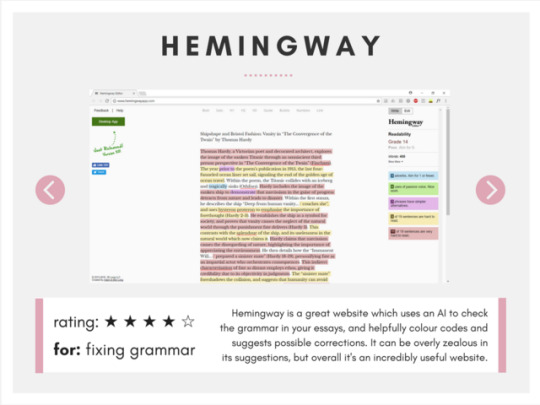

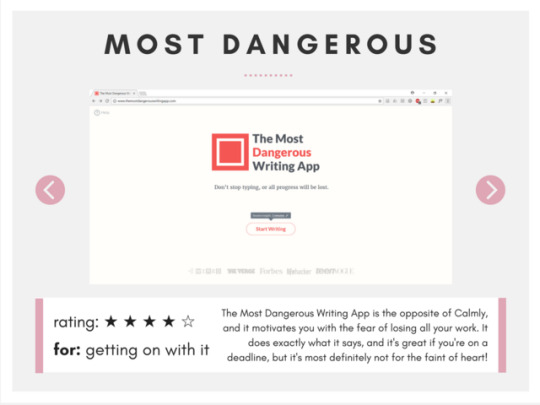
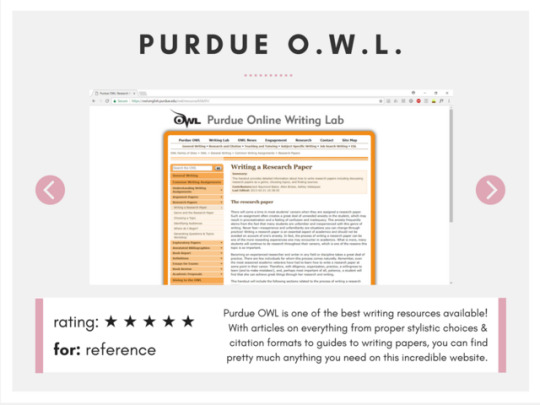

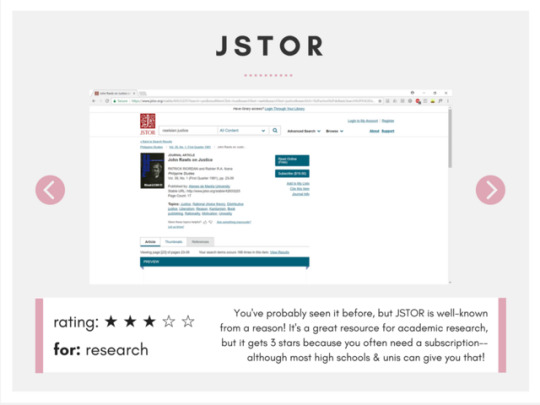

Here’s some weapons for your essay writing arsenal!
Hemingway Editor Calmly Writer The Most Dangerous Writing App Purdue O.W.L. One Look Thesaurus JSTOR Google Scholar
Reply with your favourite or other great websites I didn’t include!
71K notes
·
View notes
Text
Tips On Descriptions

This is also available on wordsnstuffblog.com!
– Here are some tips on the daunting task of description and descriptive writing. I’ve compiled my most straight-forward and useful advice on the subject to aid you in your writing.
–Patreon || Ko-Fi || Masterlists || Work In Progress || Studyblr || Studygram
Be Honest In Your Prose
Don’t go back and edit each sentence with a thesaurus in hand. Put clarity before prestige and pride in your skills as a wordsmith. Chances are, your reader will notice a pretentious, misplaced adjective more often than they’ll complain about clear, accessible language. Your job is to describe and create an image, not impress the reader with how many words you can look up in a dictionary.
Be Clever About It
Description shouldn’t be obvious or overbearing to the reader. There shouldn’t be large blocks of description. Much like backstory, description should be sprinkled in periodically, when the detail becomes necessary, and at about the same pace as someone were noticing it in the moment. For instance, if you entered a room, you wouldn’t take 30 minutes to notice the pattern on a silver hairbrush sitting across the room on a dark stained oak desk from around the 1870s if your calculations are correct. You’d notice the color of the paint on the walls, whether the blinds were open or closed, and whether anyone was in there. The rest would be noticed during lulls in conversation or in between unrelated thoughts. The reader should never have a second where the thought “wow, when’s the conversation gonna start” crosses their mind.
Metaphors & Similes
Using figures of speech are really effective when they’re pulled off, but they must be very accurate and well executed. Anyone can say “My man was a fish”, insinuating that he’s slimy and cold, but unless you surround that with a clever use of other description and context, it won’t go over well on its own. Approach these very cautiously, and when the moment is optimal.
Moderation
Learn where the line is when it comes to where to stop incorporating more precise detail. As Stephen King said, “it’s not a question of how to; it’s a question of how much to”.
Show, Don’t Tell (Mostly)
In most cases, you want to describe what’s happening to the reader through imagery in order to form a clear scene in their head, rather than telling them what’s going on as if you’re rehashing a story over brunch, because the latter falls flat very quickly and loses the reader’s attention/engagement. I have a full article on this that goes over pretty much every “but what about-” you’re thinking of.
Support Wordsnstuff!
FIND MORE ON WORDSNSTUFFBLOG.COM
If you enjoy my blog and wish for it to continue being updated frequently and for me to continue putting my energy toward answering your questions, please consider Buying Me A Coffee, or pledging your support on Patreon.
Request Resources, Tips, Playlists, or Prompt Lists
Instagram // Twitter //Facebook //#wordsnstuff
FAQ //monthly writing challenges // Masterlist
MY CURRENT WORK IN PROGRESS (Check it out, it’s pretty cool. At least I think it is.)
Studyblr || Studygram
Check out my YouTube Channel!
672 notes
·
View notes
Text
How to create a study schedule for the holidays
Holidays are just that, holidays. However school and university doesn’t always stop for them. Whilst you’re supposed to be relaxing, there is usually a stack of work waiting to be finished before you go back. After a couple of requests, I’ve put together a small guide to setting up (and following) a holiday study schedule. Keep reading to find out more:
Start early - most students (myself included) generally leave all their work until the last few days of the holidays, then they panic about not having enough time. As soon as you’re able, get started with your schedule. The sooner you start, the sooner all your work is done and you’re free to have a study free holiday. Plus starting early means that you will remember things from your last few classes. If you’ve been off for two weeks and not thought about school, you’ll have to review everything you did before school finish in order to jog your memory!
Write down everything that needs to be done - create a list of everything that you need to finish before you go back to school. I find it easiest to write everything in chronological order and separated by subject. For example, I’d write ‘read chapter 2′, then ‘summarises chapter 2′, then ‘complete review questions’. This way you can see everything you need to cover in the study plan.
Decide how long it will take - estimate how much time all your to-dos will take - maybe a day to type up your class notes, an afternoon to write an essay or an hour to finish a worksheet you didn’t complete. Start fitting in each task around your holiday plans. If you have a spare hour, you could draft that essay you need to write. If you’re spending two hours in the car, print your notes and revise them. Before bed, read the flashcards that you made!
Plan it out - using a calendar or excel, make a schedule for your holiday. It could be daily, weekly, or monthly depending on which way you find it best to plan. Include all the tasks you’d want to complete in that time period. If you get bored easily, break it up into small time periods or change subjects after a few hours! Vary the tasks you need to complete. For instance, no-one wants to spend a day writing essay after essay. Spread them out across a few days and add other small, more fun tasks in between. Here is a study schedule I created which you can download and print! Here is an example of how to fill it out. Design it to what suits you the best, illustrate it or highlight it! Make it something you want to follow.
Take charge of improving your productivity - By planning out your time and setting up a schedule you’re attempting to improve your productivity. Since it is the holidays you don’t want to be spending hours on end finishing work or revising. Find ways to keep yourself accountable for your time. Applications such as Forest or RescueTime are great for helping you stay focused. I also created a post with 10 small tips to improve your productivity. Have a read and try to apply some of them to your studying!
Stick with it - the best way to actually follow your study plan is by being motivated to use it. Put it in a place you see often, for instance near your bed or above your desk. Each morning, see what you need to do and try to get it done. Reward yourself for completing the tasks you need to and cross them off your schedule. However, don’t be afraid to make changes to it. If you can get something do sooner, go ahead but if you miss a day, don’t fret. Either reprint or retype your schedule with new plan!
Take time out - remember that it is your holiday and you don’t need to work 24/7. Have a break, have ten. Take a day to binge watch your favourite show or read that book you’ve wanted too. Don’t feel bad about having some down time, you deserve it!
I hope this helps and you have a lovely holiday! Enjoy the printable I added into the post as well. If you use it, please tag me in any photo you upload! x
9K notes
·
View notes
Text
HOW TO WRITE A STRONG ESSAY
I recently got an ask about how to write an introductory paragraph for an essay so I thought I’d do a post about how to write a good essay.
** Important Points ** For essays in high school, use third person unless the teacher specifically tells you not too. It’s more academic and professional while first person sounds really informal. I’ve heard that in college it’s different but again, it depends on the class. Stay on the safe side and use third person unless otherwise specified. Also, try to be as sophisticated and mature as you can. This makes the essay sound smarter and makes it easier to read.
1) INTRODUCTION
Try to think of an upside down pyramid here. You start off broad and end off tapered to a point (specific). The formula for writing a good intro is this: hook, background info, introduce topic of discussion, and thesis. In the pyramid example, the hook is the broad and the thesis is the narrow. The intro is usually around 8 sentences long.
Hook: Unlike what you’ve probably been told through out high school, the hook is not necessarily a wow statement. It’s typically a broad idea that relates to the topic of discussion. I usually use historical facts or common wisdom and go from there. I then follow it up with a sentence that elaborates on my hook and a sentence that connects my hook with the background info.
Background Info: Here you give the reader some context as to what you will be discussing in your essay. It sets the scene for the topic you’re discussing. Try to be concise.
Introduce the Topic of Discussion: Here you give a brief summary of the points you’re arguing/discussing. It should be one sentence per body paragraph and again, be clear and concise and avoid merely summarizing the plot. This part should cover the gist of your ideas.
Thesis: This should be a longer complex sentence that summarizes your point of view and ideas. This is one of the most important parts of the essay so crafting a good thesis is crucial.
I did a more detailed post about the introduction with an example introduction paragraph HERE.
2) BODY PARAGRAPHS
The meat of your essay. Here is where you state your arguments and defend them with supporting evidence from literature, articles, or even your personal experience. I would generally limit one argument per body paragraph. Which reminds me, most likely you have been taught the canned five paragraph essay. Some people write all their essays in five paragraph format because they thing that is the only way to go. Really, you can do four+ body paragraphs with the common numbers being four and six. It depends on the essay. When writing your body paragraph you need this structure: topic sentence, three points, three examples of supporting evidence, conclusion. Body paragraphs typically fall between 8 -15 sentences.
Topic Sentence: This is similar to a thesis. Here you’re stating the argument that you are proving in a clear and concise sentence.
Three Points: There’s a rule of thumb that you generally want to have three points about each argument and have a piece of supporting evidence for each point. I’m going to start with the three points first. Basically, you want three ideas about your argument that show why it’s valid. For example if you’re trying to argue that cheese is dairy, your three points are it’s made of milk, it’s featured in the dairy section of the grocery store, and the FDA labels it as dairy.
Three Examples of Supporting Evidence: These are usually quotes from other sources or the piece of literature you’re analyzing that support the three points of your argument. To use the really bad cheese example from above, for the milk point you’d use an ingredients label from a package of cheese, for the grocery store point you’d get a sheet with the department labels and the produce in those departments, and for the FDA point you’d find a quote from their website.
Conclusion: This is a sentence or two that wraps up your body paragraph. It should briefly summarize the points you discussed or the topic sentence and help transition into the next paragraph.
2) a. COUNTER ARGUMENT PARAGRAPHS
This paragraph is NOT necessary for most essays. However, some do require them so it’s important to know how to approach them. Depending on whom you ask, they’ll either tell you that the counter argument paragraph goes in the middle of your body paragraphs, or at the end. Personally I prefer the end but the middle is more correct. Placing it in the middle allows you to end on a strong note but I think it’s a matter of personal preference. The counter argument is used to present an opposing view point and say why it’s wrong. This can strengthen your argument if it’s done properly but ruin it if it’s done wrong so tread carefully. The only thing different from the body paragraph structure is the topic sentence.
Topic Sentence: Here you need a specific template to start the paragraph properly. I usually use: It may be argued that _______________ but there is sufficient evidence to show that _______________. The first blank is filled with the opposing argument and the last blank is your argument. There are different ways to structure this sentence but this is the one I use.
The rest of the paragraph is the same as the body paragraph: you get three points as to why the counter argument is wrong and three points to support it. Then you end with a typical concluding sentence.
3) CONCLUSION
This is where you wrap up your arguments and finish strong. It has three components: a restatement of your thesis, summary of your arguments, and general statement to wrap it up. Think of the right side up pyramid this time. The pointy end is the thesis and the bottom is the general statement that closes your essay. A conclusion is typically 5 sentences long.
Restatement of Thesis: This is pretty self explanatory; you restate the thesis using different language than you used in your intro.
Summary of Arguments: Here you briefly touch upon the arguments you covered in your essay. Again, clear and concise, and whatever you do, DO NOT introduce new information. It can ruin the amazing essay you worked so hard on.
General Statement: A general statement is a broad idea that you use to tie your entire essay together. It’s kind of like the hook but should be more relevant to your essay.
And that is how you write a killer essay. I use this technique whenever I write and it has never failed me. Hopefully if will help you improve your writing! If you have any questions, feel free to hit up my ask box.
17K notes
·
View notes